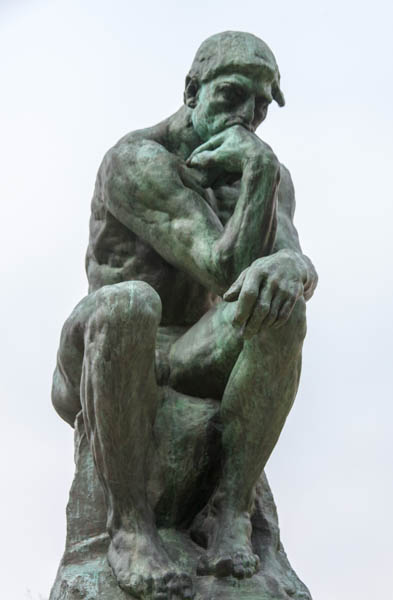
Back in 2007, the philosopher Mary Midgley published a pamphlet entitled Intelligent Design Theory and other ideological problems (PDF) with the Philosophy of Education Society of Great Britain. Prompted by controversies over the teaching of evolution in both the United States and Britain, she sought, as she explains, to address problems “about the current promotion of Intelligent Design Theory,” to consider them in a broader historical context, and to offer a few suggestions “about the best way for schools to handle problems such as those presented by Intelligent Design Theory” (p. 2). Now, in a forthcoming review (PDF; subscription required) of Midgley’s pamphlet in the Journal of Philosophy of Education, the philosopher Nicholas Everitt writes that although “I expected to find myself in substantial agreement with what Midgley says…having examined [the pamphlet], I find that I disagree with much that it claims” (p. 1). What could be more blogworthy than a philosophical kerfuffle over creationism?
A minor criticism that Everitt raises is about the definition of “creationism”; “contrary to what Midgley implies,” he writes, “all standard Christians are creationists” (p. 4), for they all accept that God is the creator of the universe. The Nicene Creed, for example, describes God as “Maker of all things visible and invisible.” Midgley never defines creationism, using it mainly to apply to young-earth creationism but at least countenancing its use to apply to “intelligent design” (she describes the Discovery Institute as “the main Creationist body organizing propaganda” for “intelligent design” [p. 26]). Pace Everitt, there are respectable definitions of “creationism” in use in the scholarly literature that accord with Midgley’s usage: Robert T. Pennock, for example, offers, “In its basic generic sense, creationism refers to any view that rejects evolution in favor of the action of some personal, supernatural creator.” Anyhow, Everitt offers to overlook the criticism, so even he evidently regards it as insignificant.
The major criticism that Everitt raises is about the relationship between Christianity and young-earth creationism. It’s a complicated criticism, involving both a claim about the content of those views and a claim about the history of those views, so I’m going to bisect it accordingly. With respect to the content claim, Midgley contends, “dogmatic creationism is remote from the central message of Christianity” (p. 5), and Everitt replies by contending, rather, “I take it that for such believers, their creationism is not an optional part of their faith” (p. 4). Here Midgley seems to me to have the better of it. Although there are certainly creationists who think that accepting evolution is simply incompatible with being a Christian, it seems to be a minority position (although I’m not aware of any survey data). The young-earth creationists at Answers in Genesis, for example, acknowledge—if in a way that often seems grudging—that it is possible to be a Christian, even to be saved, while accepting evolution.
When Everitt challenges Midgley’s assessment, he wonders “what her authority is to make such a judgement [sic] on what is relevant and what irrelevant in creationists’ own conception of their position” (p. 5). It would have been useful for Midgley to cite the creationist literature on the point, certainly, but creationists aren’t the only people who have a claim to judge whether or not creationism is remote from the central message of Christianity. Christians in general do, too. When Joel W. Martin surveyed (PDF) major Christian denominations in the United States, he found that “most Christians, as represented by their governing bodies, view evolution as being compatible with their faiths,” and when the Pew Research Center asked Americans whether evolution is the best explanation for the origins of human life on earth, it found a (slim) majority of Catholic, Orthodox, and Mainline Protestant respondents agreeing. So Midgley’s contention seems plausible, at least as applied to the contemporary situation in the United States.
What about the history claim? Midgley attributes creationism to “the fundamentalist view that everything written in the Bible, including the Genesis story, must be literally true” (p. 20; note that “literally” is not the mot juste, since fundamentalists recognize that there is metaphorical language in the Bible), saying, “That view was only declared as an explicit dogma quite recently, towards the end of the nineteenth century,” although she acknowledges that “the motivation behind it is much older.” Everitt retorts that young-earth creationism “was accepted as a central part of Christianity by both lay people and the leading intellectuals of mainstream Christianity” (p. 5), citing estimates—often, as he notes, risibly precise estimates—of the creation of the Earth by scholars such as Julius Scaliger and James Ussher. Modern Christians who accept the scientific estimate of the age of the Earth (which is about 4.54 billion years), he says, “have strayed from the traditional position of Christianity on this topic.”
It is true that Scaliger and Ussher were “leading intellectuals of mainstream Christianity” in their time and equally true that they concluded that the Earth was about six thousand years old. But does it follow that belief in a six-thousand-year-old Earth was “a central part of Christianity” in their day and is now “the traditional position of Christianity on this topic”? It is tempting to think that Everitt is committing a genetic fallacy of a type here, and the inference is easy to parody: is the traditional position of Christianity that men should wear their hair short because Saint Anselm of Canterbury—a leading intellectual of mainstream Christianity in his day—decried long hair in men? If Everitt isn’t committing the fallacy, then his reasoning is obscure to me. Moreover, Christians often articulate in explicit terms what they consider to be central and traditional to their faith; if he were correct, why do such documents not mention the age of the Earth? I’ll return to the point at the beginning of part 2.

